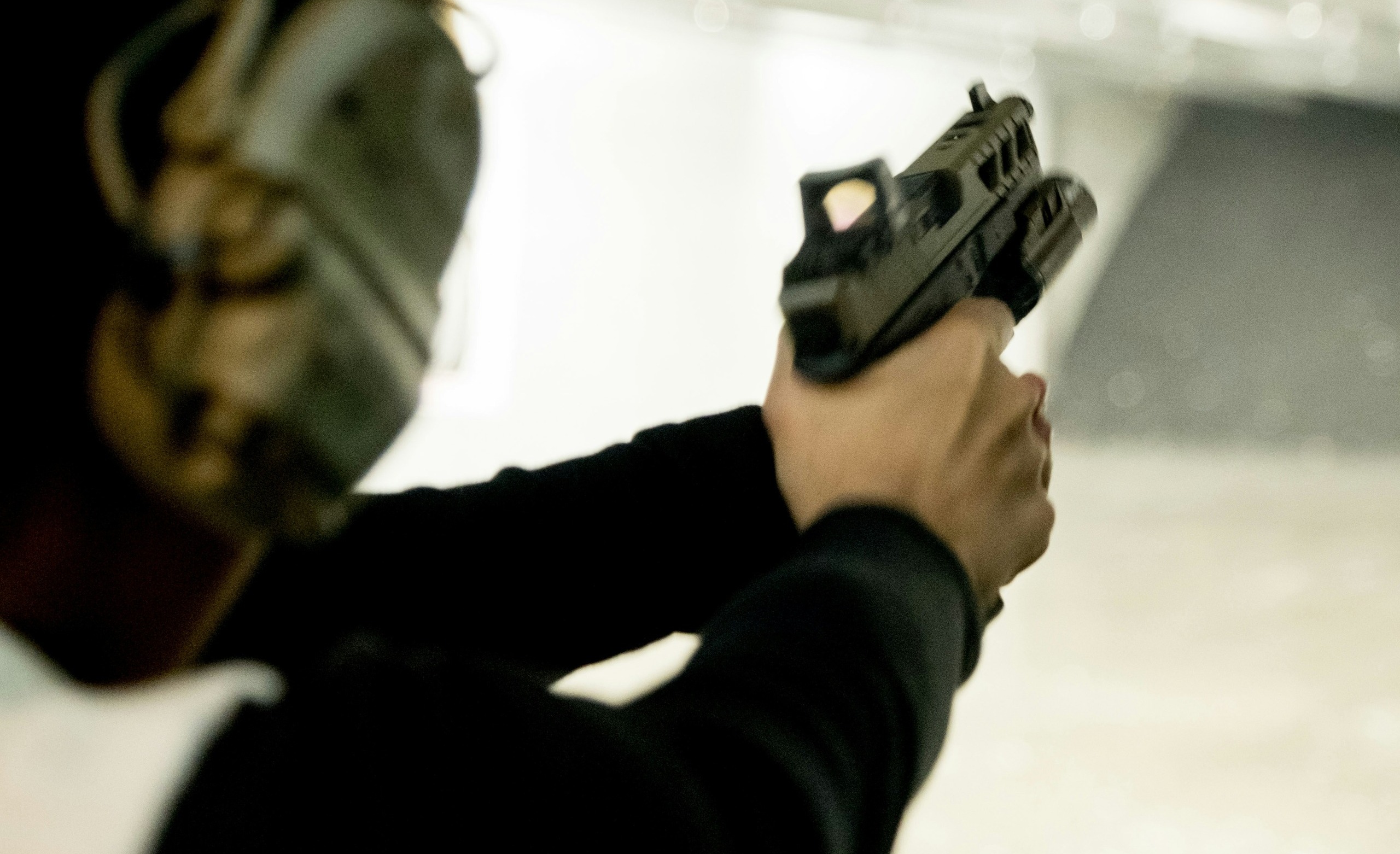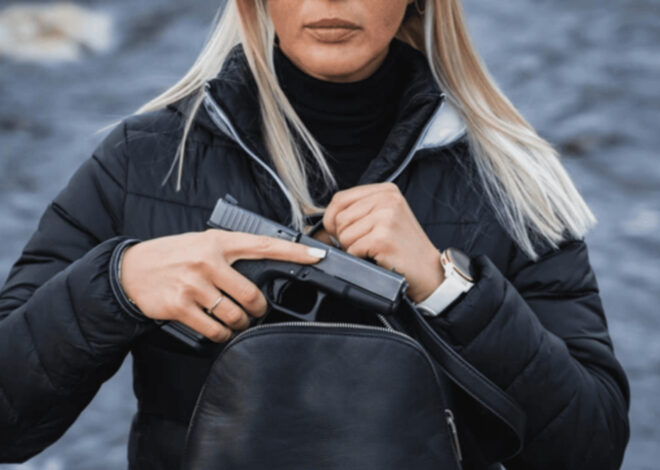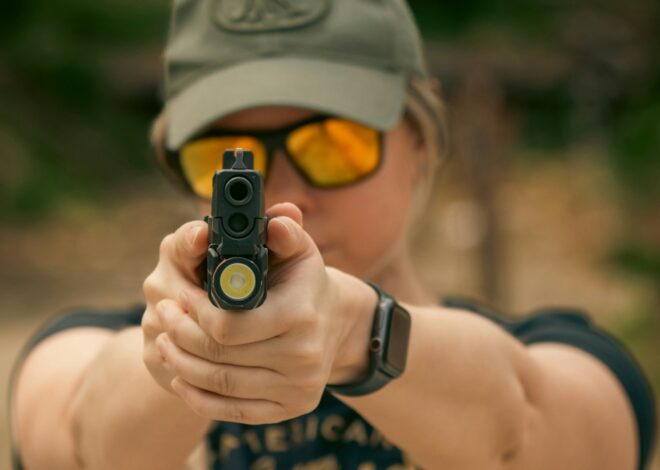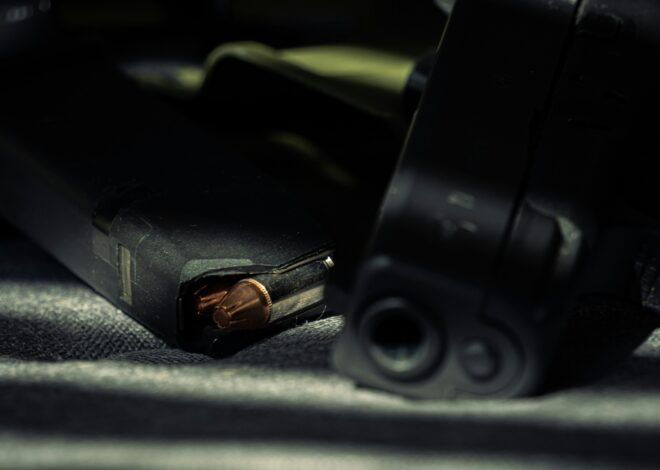
How To Shoot A Handgun
Whether you’re a beginner looking to learn or someone with experience seeking improvement, understanding how to shoot a handgun safely and effectively is crucial. Handguns have a rich history and serve various purposes, from personal protection to competitive shooting.
With the right knowledge and practice, anyone can master this skill. In this guide, we’ll explore everything you need to know about handguns—from their types and safety protocols to aiming techniques and common mistakes. Get ready to enhance your shooting prowess while prioritizing safety at every step!
Types of Handguns: Revolvers vs Semiautomatics
Handguns come in various forms, but two of the most common types are revolvers and semiautomatics. Each offers unique features that cater to different shooting preferences.
Revolvers have a rotating cylinder that holds ammunition. This design allows for reliable operation without the need for complex mechanisms. They are often favored for their simplicity and ease of use, making them great options for beginners.
On the other hand, semiautomatic handguns utilize a magazine to store rounds. Once fired, they automatically cycle the next round into position. This feature enables quicker follow-up shots and usually provides higher ammunition capacity compared to revolvers.
Choosing between these two depends on your needs—whether you prioritize reliability or speed during shooting sessions. Both styles have their loyal enthusiasts and can be effective tools when used properly.
Essential Safety Rules for Handling a Handgun
Safety should always come first when handling a handgun. Treat every firearm as if it is loaded, even if you believe it isn’t. This mindset fosters vigilance.
Always point the muzzle in a safe direction. Avoid aiming at anything you don’t intend to shoot. This simple rule can prevent catastrophic accidents.
Keep your finger off the trigger until you’re ready to fire. The temptation may be strong, but this habit significantly reduces accidental discharges.
Wear appropriate eye and ear protection whenever shooting or near others who are shooting. Safety gear protects vital senses from potential harm.
Never mix alcohol or drugs with firearms. Impaired judgment can easily lead to dangerous situations that endanger everyone around you. Staying sober ensures sound decision-making and sharp focus while handling handguns.
Proper Grip and Stance for Shooting
A proper grip and stance are fundamental for accurate shooting. Start by holding the handgun firmly with both hands. Your dominant hand should grasp the grip high, ensuring minimal recoil movement.
Place your non-dominant hand around your dominant thumb, creating a secure hold. This technique helps stabilize the firearm and enhances control.
Next, focus on your stance. Stand with your feet shoulder-width apart to maintain balance. Lean slightly forward at the waist; this posture reduces recoil impact while allowing quick follow-up shots.
Bend your knees slightly to absorb any movement during firing. Align your body so that it faces directly toward the target; this ensures better aim and stability.
Remember to keep both arms extended but relaxed. Tension can lead to shaky shots, affecting accuracy over time. A solid grip combined with an effective stance sets you up for success in hitting your mark consistently.
Aiming and Firing Techniques
Aiming a handgun requires focus and precision. Start by aligning your sights with the target. Use the front sight as your primary reference point while keeping the rear sight in view.
As you bring your firearm up to eye level, ensure that both eyes are open if you’re comfortable doing so. This technique enhances depth perception and awareness of surroundings.
When it comes to firing, practice controlled breathing. Inhale deeply before exhaling slowly as you pull the trigger. This helps maintain stability and reduces flinching.
Keep your finger off the trigger until you’re ready to fire. A gentle squeeze is key; avoid jerking or pulling abruptly as this can throw off accuracy.
Practice makes perfect, so take time at the range to refine these techniques consistently for better results on target day after day.
Steps to Take Before Pulling the Trigger
Before you pull the trigger, take a moment to assess your surroundings. Awareness of your environment is crucial while handling a firearm. Ensure there are no unintended targets in your line of fire.
Next, check and double-check that the handgun is properly loaded. Familiarize yourself with its mechanism to avoid misfires or mishaps. Understanding how it operates can save you from potential danger.
Breathe deeply and relax your body; tension can affect accuracy. Align your focus on the target, but also keep an eye on what’s behind it.
Remind yourself of the safety rules you’ve committed to memory. A clear mindset helps reinforce responsible shooting habits each time you’re ready to fire. Following these steps ensures that every shot taken reflects careful consideration and respect for safety protocols.
Common Shooting Mistakes to Avoid
Many novice shooters make the same mistakes, often without realizing it. One common error is flinching before firing. This reaction can throw off your shot and should be trained out through practice.
Another issue arises from improper grip. A weak or inconsistent hold on the handgun can lead to poor accuracy. Ensure you’re gripping firmly but not overly tight.
Additionally, neglecting to align your sights properly is a frequent pitfall. Always take a moment to focus on aligning the front and rear sights for better precision.
Avoid rushing through shots. Take your time between each trigger pull; this helps establish control and improves overall shooting performance. Stay aware of these common pitfalls as you refine your skills at the range.
Target Practice Tips and Techniques
Target practice is essential for honing your handgun skills. Start by choosing the right distance based on your proficiency level. Beginners may benefit from shorter ranges, while experienced shooters can challenge themselves with longer distances.
Use a variety of targets to keep things interesting. Paper targets work well for accuracy drills, while steel plates offer immediate feedback and help improve reaction times. Experiment with moving targets when you’re ready to add complexity.
Focus on your breathing as you aim. Inhale deeply before taking the shot, and exhale slowly as you pull the trigger. This helps stabilize your body and reduces tension.
Regularly track your progress by noting group sizes and patterns in shots fired. Adjusting techniques based on this data can lead to significant improvements over time.
Always remember to mix up your routines—changing positions or shooting at different angles keeps practice fresh and engaging, further developing your adaptability as a shooter.
Maintaining Your Handgun
Regular maintenance is crucial for keeping your handgun in top condition. Start with a thorough cleaning after each use. Residue can build up and affect performance.
Use a quality gun cleaning kit that includes brushes, patches, and solvents. Pay special attention to the barrel and action, as these areas often accumulate grime.
Inspect the components regularly for wear or damage. This includes checking springs, pins, and magazines. Replacing worn parts promptly ensures reliability when you need it most.
Always store your handgun in a dry place to prevent rust or corrosion. Consider using silicone cloths to wipe down metal surfaces before putting it away.
Familiarize yourself with the manufacturer’s guidelines for specific care instructions tailored to your model. Proper upkeep not only enhances accuracy but also prolongs the lifespan of your firearm significantly.
Laws and Regulations for Carrying a Handgun
Understanding the laws and regulations for carrying a handgun is crucial. Different states have varying rules regarding concealed carry, open carry, and permit requirements.
Some jurisdictions require individuals to obtain a permit before carrying a handgun in public. This often involves background checks, safety courses, and sometimes even psychological evaluations. Familiarizing yourself with local laws can prevent serious legal consequences.
It’s essential to recognize that certain places may prohibit firearms altogether. These areas include schools, government buildings, and private properties where owners explicitly restrict weapons.
Furthermore, staying informed about changes in legislation is vital as laws can evolve rapidly. Engaging with local gun advocacy groups or online communities may provide valuable insight into current regulations in your area.
Always prioritize understanding these laws before stepping out with your firearm; ignorance of the law is not an excuse.
Conclusion
Shooting a handgun is an important skill that requires knowledge, practice, and responsibility. By understanding the different types of handguns, familiarizing yourself with essential safety rules, and mastering proper grip and stance techniques, you set a solid foundation for becoming an effective shooter.
It’s crucial to approach shooting with the right mindset. Take your time to learn aiming and firing techniques while maintaining awareness of common mistakes shooters make. Regular target practice will not only improve your accuracy but also build confidence in your abilities.
Remember that maintenance plays a key role in ensuring your handgun operates safely and effectively. Knowing the laws surrounding handgun ownership is equally vital; staying informed helps you navigate legal responsibilities as a gun owner.
Embrace the journey of learning how to shoot a handgun responsibly and enjoyably. With dedication and respect for this powerful tool, you’ll become proficient over time while prioritizing safety above all else.



